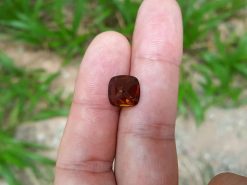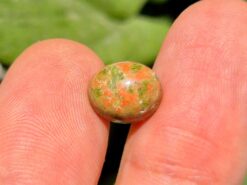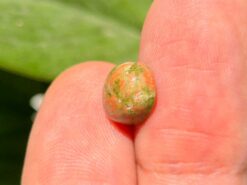Blue goldstone

Goldstone or is a type of glittering glass made in a low-oxygen reducing atmosphere. The finished product can take a smooth polish and be carved into beads, figurines, or other artifacts suitable for semiprecious stone, and in fact goldstone is often mistaken for or misrepresented as a natural material.
Buy natural gemstones in our shop
Goldstone exists in various color variants based on other elements. Cobalt or manganese can be substituted for copper; the resulting crystals have a more silvery appearance and are suspended in a strongly colored matrix of the corresponding ionic color, resulting in blue goldstone or purple goldstone respectively.
The non-copper goldstones are easier to work with when reheated, due to the less stringent reduction requirements and higher melting points of manganese and cobalt.
Production
One original manufacturing process for blue goldstone was invented in seventeenth-century Venice by the Miotti family, which was granted an exclusive license by the Doge. Urban legend says goldstone was an accidental discovery by unspecified Italian monks or the product of alchemy, but there is no pre-Miotti documentation to confirm this. A goldstone amulet from 12th- to 13th-century Persia in the collection of the University of Pennsylvania shows that other, earlier artisans were also able to create the material.
The most common form of goldstone is reddish-brown, containing tiny crystals of metallic copper that require special conditions to form properly. The initial batch is melted together from silica, copper oxide, and other metal oxides to chemically reduce the copper ions to elemental copper. The vat is then sealed off from the air and maintained within a narrow temperature range, keeping the glass hot enough to remain liquid while allowing metallic crystals to precipitate from solution without melting or oxidizing.
After a suitable crystallization period, the entire batch is cooled to a single solid mass, which is then broken out of the vat for selection and shaping. The final appearance of each batch is highly variable and heterogenous. The best material is near the center or heart of the mass, ideally with large, bright metal crystals suspended in a semitransparent glass matrix.
Blue goldstone – Blue aventurine glass
















